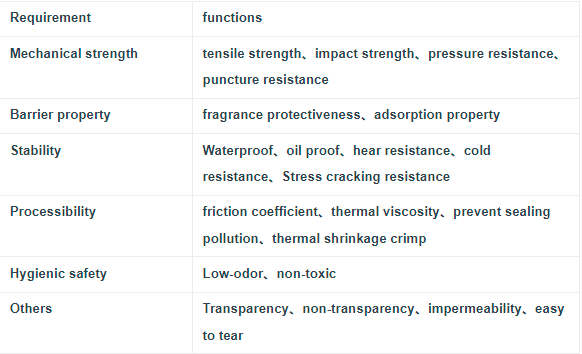Analysis of Flexible Laminated Packaging Structure
Flexible packaging is one of the most important packaging materials. It accounts more than 40% of all our packaging. Laminated flexible packaging is the biggest category for flexible packaging to pack products with heavy weight, high barrier and higher packing quality requirements.
Today we will talk about analysis of flexible laminated packaging structure. Hope it will help people to understand it better.
It’s an in-depth article that takes 20 minutes to read.
Navigation, click to jump to the section you want to read
Analysis of Flexible Laminated Packaging Structure
1) What is flexible laminated packaging?
Flexible laminated packaging is the packaging laminated two or more flexible packaging webs together by bonding agent. The substrates making up the webs may consist of films, papers, or aluminum foils. So that the laminated packaging achieves improved strength, stability, sound insulation, appearance, or other properties.
2) Outer layer material
The material used in outer layer is usually with properties of good mechanical strength, heat resistant, excellent printing performance, good optical performance, etc.
The most common materials we used are: PET, BOPP, PAPER, MDO-PE,
All these outer layer materials can be with special treatments, such as matte, high barrier coating,
Requirements and Functions of Outer layer material

3) Middle layer material
The material used in middle layer is to enhance the packaging properties of high barrier, light proof, smell proof, oxygen blocking, water blocking, mechanical strength, etc.
The most common materials used are: foil, VMPET, PET, NY, KPET, KBOPP, Metalized MDO-PE, paper, etc.
Normally there will be only one layer material for middle layer, but sometimes there can be 2-3 layers of middle layers.
Requirements and Functions of middle layer material

4) Inner layer material
The most important functions for inner layer material are the sealing performance, drop performance, airtight performance and food contact safety if needed.
The most common materials use in inner layers are CPP, PE, PLA, etc.
Requirements and Functions of inner layer material

5) More explanation on laminated structures
Normally there will be 3 layers for flexible laminated structure.
But there might be 2 layers only, in this case it might either don’t need the middle layer functions, or it can do special treatments on outer layer or inner layer. Such as metalized, or high barrier coating.
It can also be more than 1 middle layer, such as 2-3 middle layers, but it will be the same functions as the 1 middle layer, but just need to enhance the needed property.

6) Ink & adhesive
Ink is for printing on the flexible material. Normally it is on outer layer. The ink must be selected based on the packaging post-processing and product circulation conditions.
Laminated will need adhesive. With the help of adhesive layer, two or more layers of material can be bonded together. The bonding strength between the adhesive layer and film material is an important indicator evaluating the internal performance of laminated films. Different packaging, according to the adhesive features, will have different tolerance requirements.
Flexible laminated packaging from Longdapac
Longdapac is the leading flexible packaging manufacturer from China. We focus on sustainability packaging as you can see below:
Longdapac is the first high barrier MDO-PE film supplier in China.
Longdapac is the first Chinese factory who can make high barrier mono-material PE pouch.
Longdapac recyclable high barrier mono-material PE pouches can meet the recyclability of
- REDcycle in Australia
- CE FLEX in EU
- How2Recycle in USA
- SOFT PLASTIC in New Zealand
Longdapac is a BRC and ISO certified factory with annual capacity of more than 25,000 tons.
Basically Longdapac can satisfy all your recyclable packaging needs, both standard and high barrier.
